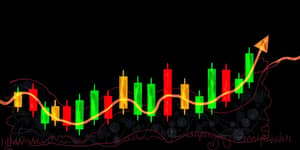
Economic indicators are more than dry numbers on a page. They are the compass guiding governments, businesses, and individuals through an ever-shifting financial landscape. By understanding these metrics, we can make informed choices, anticipate challenges, and seize opportunities in a world defined by complex forces.
At their core, economic indicators are statistics or data points that offer insights into the health, performance, or growth trends of an economy. They are compiled from vast arrays of surveys, official reports, and financial records to reveal whether markets are expanding, contracting, or holding steady.
These measures serve a threefold purpose: they describe current conditions and future trends, forecast upcoming shifts, and confirm long-term patterns. Because of their predictive power, they play a crucial role in decisions made by investors, policymakers, corporations, and households alike.
Key users include:
Economic indicators generally fall into three categories based on timing. Each type offers unique value depending on whether one is forecasting, confirming, or observing current activity.
Leading indicators signal potential changes before they appear broadly in the economy. Common examples include consumer confidence indexes, initial jobless claims, and shifts in the yield curve. By watching these signals, analysts can anticipate expansions or contractions.
Lagging indicators confirm trends after they occur, offering validation of economic shifts. Metrics such as the unemployment rate, inflation measures (CPI), and corporate profits fall into this group. They help assess whether policies or investments have delivered intended results.
Coincident indicators move in tandem with real-time economic activity. Retail sales figures, employment levels, and GDP measurements provide a snapshot of current conditions, enabling timely assessments of market health.
Understanding economic metrics empowers individuals and organizations to align their actions with market realities. Whether you are managing a portfolio, designing policy, or setting corporate strategy, these indicators offer a foundation for confident decisions.
In financial markets, traders and analysts monitor indicator releases closely. A surprise inflation reading can send bond yields soaring, while a stronger-than-expected GDP report may trigger stock market rallies.
Economists build forecasting models that integrate leading, lagging, and coincident indicators to project recessions or booms. These forecasts shape central bank policies and corporate budgets well in advance of actual events.
On the global stage, international institutions compare economic indicators across countries to assess competitiveness, stability, and policy effectiveness. Such comparisons influence trade negotiations, foreign direct investment, and development aid.
Recession Signals: An inverted yield curve, declining consumer confidence, and falling corporate profits can spell trouble, often foreshadowing economic downturns.
Boom Periods: Rapid GDP growth, brisk employment gains, and surging retail sales point to healthy expansion—times when businesses thrive and hiring accelerates.
Currency Movements: When growth forecasts dim in one region and brighten in another, capital shifts drive currency valuations. A downgraded outlook for US growth can weaken the dollar, while stronger Eurozone data can lift the euro.
Across the Eurozone, core inflation settled at 2.3% in May 2024, prompting rate cuts and sparking hopes for renewed spending. In contrast, US private demand remained resilient through 2024 despite uneven state-level momentum.
Long-term demographic shifts are also shaping global markets. Japan’s labor force, which stood at 69.25 million in 2023, is projected to fall to 62.87 million by 2050—creating long-term economic pressures on social welfare and productivity.
Economic indicators, when interpreted thoughtfully, become powerful tools for navigating uncertainty. They bridge data and decision-making, helping us anticipate change and respond proactively.
By integrating these metrics into your strategy—whether for investing, policy formulation, or business planning—you embrace a data-driven approach that fosters resilience, growth, and sustainable prosperity. Keep a close eye on these signals, and let them guide you toward informed, impactful choices.
References













